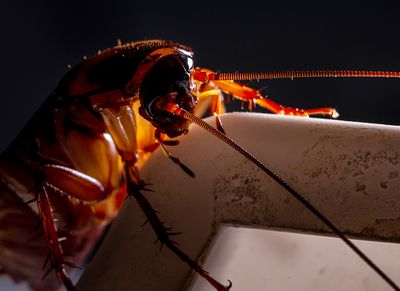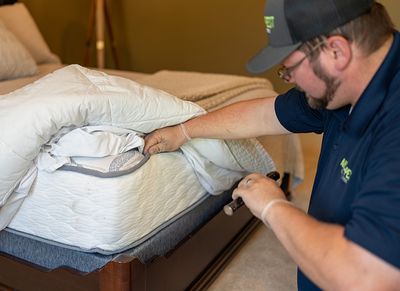What do fire ants look like?
Red imported fire ants measure 1/8 to 3/8 inches in length. They are dark reddish-brown insects with shiny dark brown gasters and stingers. Originally from Brazil, they were introduced to the United States in the early 1900s and are now widespread.
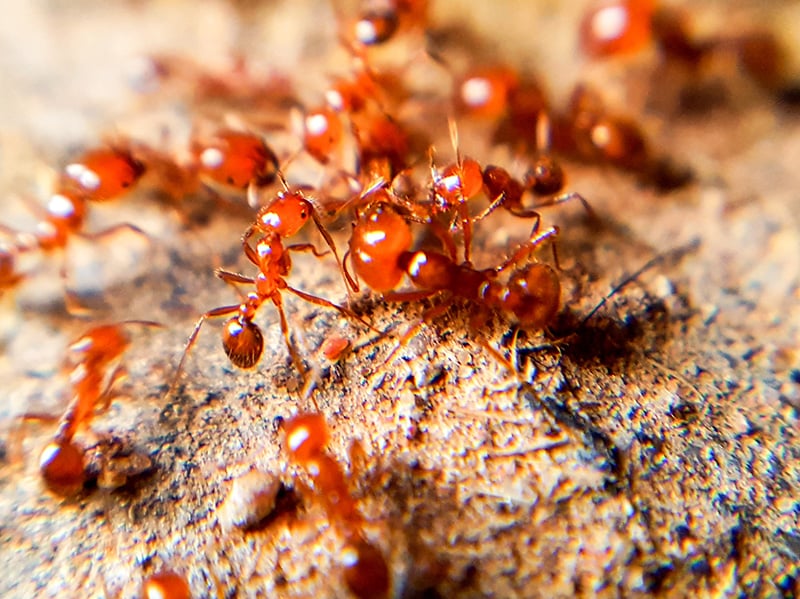
When are fire ants most active?
What do fire ants eat?
Fire ants are omnivores, meaning they eat both plants and meat. Since they are small, they primarily eat insects, plant materials, and small, dead animals. Similar to other types of ants, fire ants leave their nests to search for food. If a scout ant finds something tasty, it will leave an invisible pheromone trail back to its nest for other ants to follow.
Do fire ants bite or sting?
Many pests bite or sting. Fire ants are one of the few species that do both. These small ants attach themselves to exposed skin with their powerful mandibles to stabilize themselves in case their victim starts to flail in an attempt to shake them off. Once attached, fire ants start stinging by injecting venom into their victims with their rear stingers.
Why do fire ants sting all at once?
A fire ant is more likely to fight for its nest than for itself. If a group of these pests detects a human or animal near their home, they will investigate the potential threat. If you disturb or step on a nest, these insects will release an alarm pheromone to alert other workers to attack.
Are fire ants dangerous?
There is nothing pleasant about being bitten or stung by a fire ant. These pests hurt. They are only dangerous, however, in certain instances. If you have an allergy to fire ant venom, you will have a more severe reaction to their stings. If you do not have an allergy, fire ant stings will still burn, but they shouldn’t present a danger.
What attracts fire ants?
Two things attract fire ants to a property: food and shelter. These insects have no problem living outdoors when the weather is nice and often create unsightly nests in the sunny areas of a property. They may build a nest indoors if conditions become too cold or dry. Fire ants are also motivated by food. If a scout finds something tasty on your property or inside your home, it will tell its friends.
Where do fire ants nest?
You are most likely to find fire ants nesting underground beneath large mounds of dirt. These pests prefer to build in lawns, pastures, parks, cultivated fields, gardens, and other open areas with lots of sunlight. They may also build nests inside items like molded plastic toys and other objects with hollowed-out areas as well as electrical boxes.
Although they’re more likely to live outside, unfavorable weather conditions may cause them to move indoors. In that case, these ants may nest inside walls and ceilings.
What do fire ant mounds look like?
Fire ant mounds (also called fire ant hills) do not have a central hole in which ants can crawl in and out. Instead, they build tiny holes around the base of their mounds. Mounds may have grass or other vegetation growing through them.
Because fire ants have multiple queens, nests can grow quite large and take up considerable patches of ground. If these pests have a lot of food, they will continue to expand their nests and become more of a problem given time.
Why do fire ant mounds pop up after it's rained?
During periods of drought, fire ant colonies move underground where it’s cooler and where they have access to moisture. After a heavy rain, they'll start building their mounds, which is why they seem to pop up.
Significant rainfall can also cause fire ant mounds to collapse and fire ants to drown. They'll often move to higher ground to avoid these issues and start building new mounds.
How do I get rid of fire ants?
Anti-Pest’s home pest control plan is the ideal solution to exterminate fire ants around Louisiana homes. In fact, fire ant control within 50 feet of the house is included in this ongoing service. We also offer fire ant control for businesses in our Northwest Louisiana service area.
How can I prevent fire ant infestations?
To prevent red imported fire ants from taking over your yard or moving indoors, we recommend:
- Sealing entry points.
- Removing food sources.
- Addressing moisture problems.
- Managing interior and exterior trash.
- Keeping your yard picked up.

Testimonials


Our Services

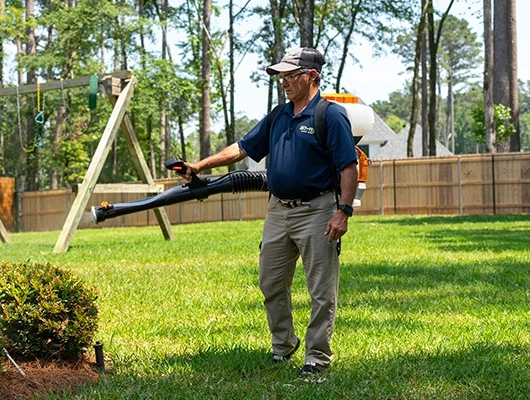
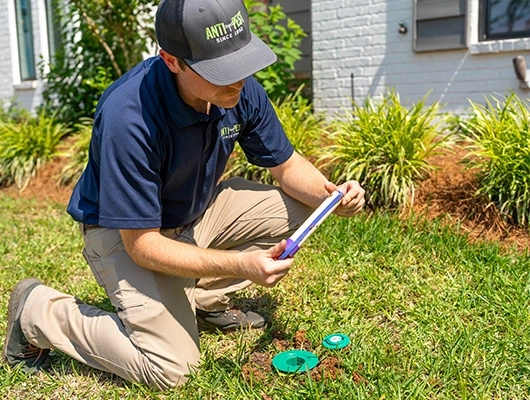

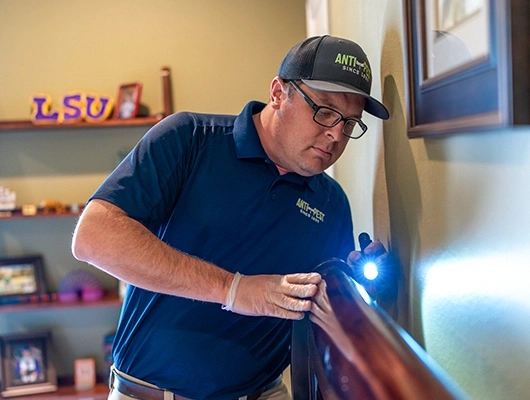
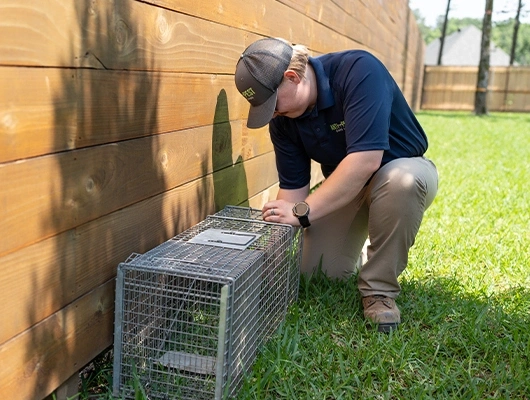
News, Blogs, & Articles
Anti-Pest Blog

